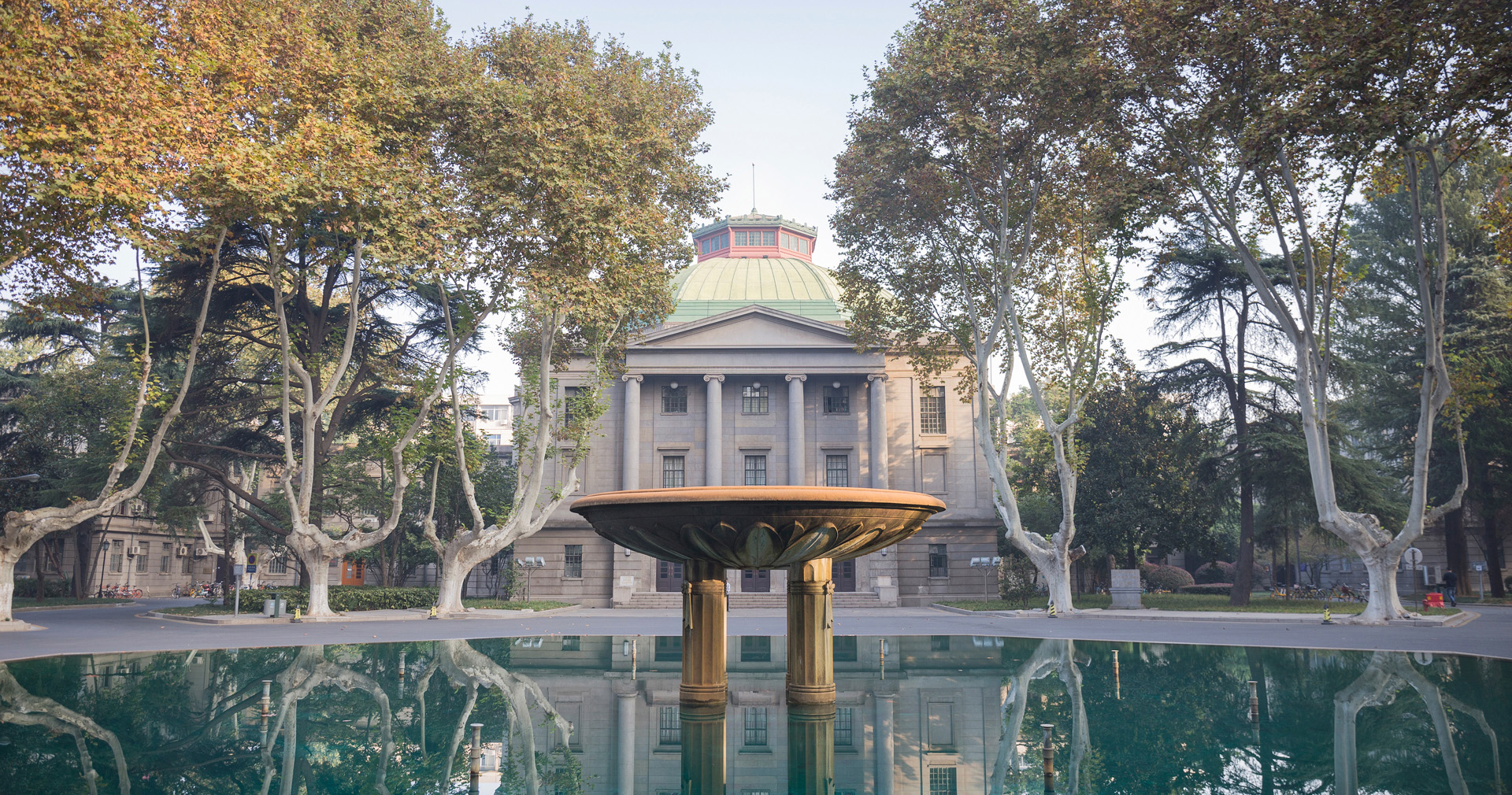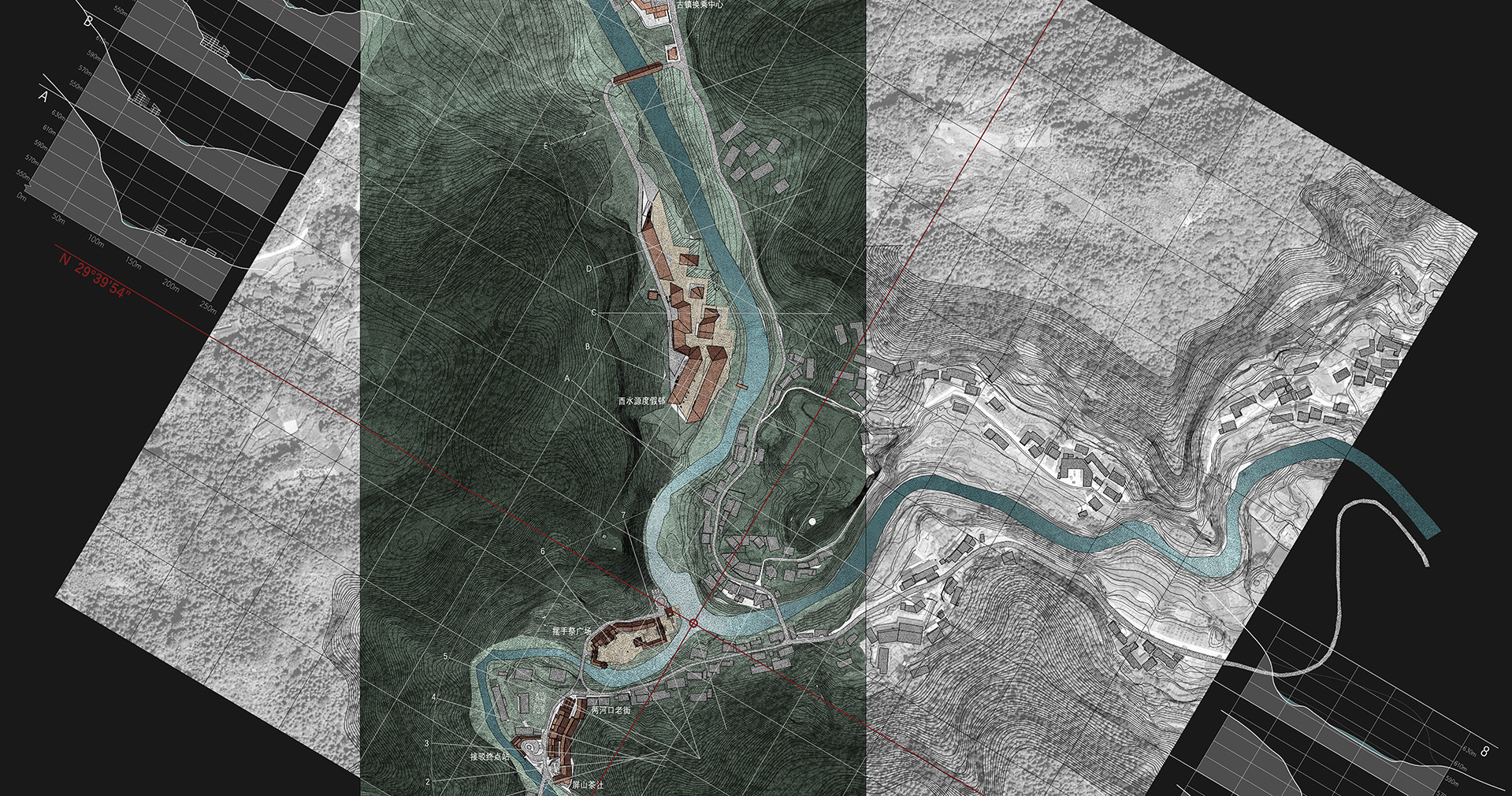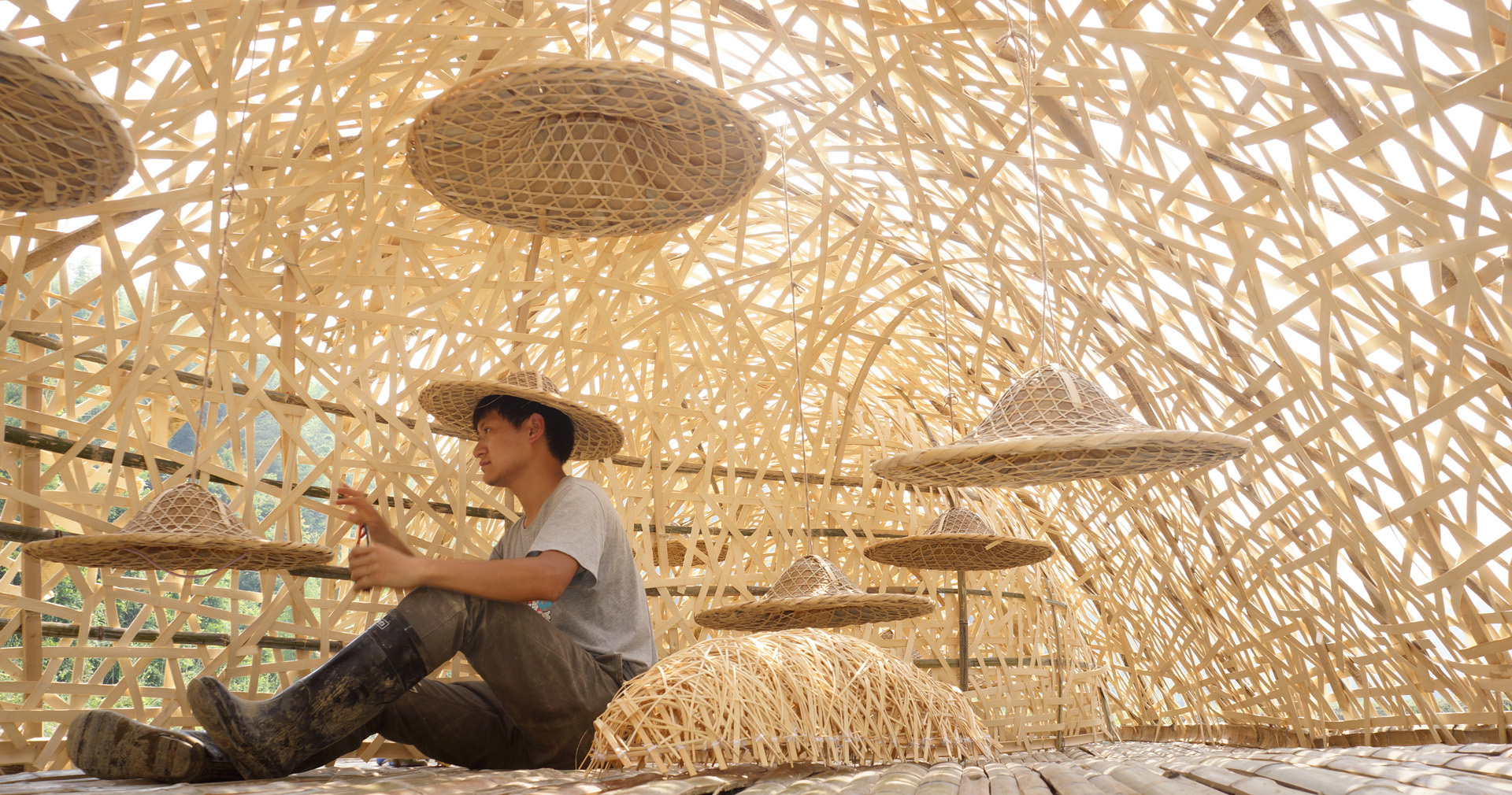
Living Construction
Post-Graduate Studio of Bamboo Construction, School of Architecture, Southeast University
The works of studio were selected to be exhibited at “Sharing and Regeneration”, the Collateral Event of the 15th International Architecture Exhibition/ La Biennale di Venezia 2016


Masterplan of the 22 Duck-pens, Shuangmiao Village, Lin’an
Nature, as the summation of space and time, propagates between heaven and earth. Agriculture and construction were once the dream jobs for human, working and recuperating in accordance with natural propagation and topographic venations, reaching a balance between human's demands and nature’s giving.

Knitting Topography, Shuangmiao Village, Lin'an

The Cocoon, Shuangmiao Village, Lin'an
Chinese centuries-old agricultural civilization has been following production rhythm of seeding, ploughing, reaping and storing from spring to winter. Traditional NongJia’s thinking emphasizes the feasibility of farming work to seasons, topographic venations and propagation of crops. Wang Zhen at 13th Century, in “Agricultural Book”, presented a diagram of “Timing Based Propagation” representing the revolvingorder of seasons, being the most integrated summary of agricultural propagation between the shifting seasons in ancient China.

Fluttering Bamboo, Shuangmiao Village, Lin'an
In the traditional concept of agrarian China, construction is comprehended as a contract with earth and heaven, spaceand time. The nature of construction is observing the tendency and defending cohesion of QI inside topographic venations. Within the spatiotemporal coding of Heavenly Stems and Earthly Branches, every step of building a house possesses its feasibility or infeasibility to timing. Code weaved jointly by time and space compiles composition of the universe and fate of beings.

The Waves, Shuangmiao Village, Lin'an
Bamboo, absorbing spiritual power from nature, growing between shifts of seasons, solidarizes firmly with nature. Bamboo cannot serve as primary materials when the construction is applied to resist abrasion from time, or to seek for eternity. When the lifespan of construction conforms to the rhythm of nature, bamboo, becomes the sustainable material possessing most naturality.

Masterplan of the 6 Duck-pens, Lianhuadang Farm, Yixing

La Specola, Lianhuadang Farm, Yixing
Teachers and students from School of Architecture, Southeast University, conducts teaching and practice based on the conception of Living Construction in the regions south of the Yangtze River, with most prosperous culture of rice cultivation—mountainous area of Lin’an, Zhejiang Province, and reticula lake area of Yixing, Jiangsu Province. Following supersedure of nature, the primordial material of bamboo abound in the local area was chosen, adopting primitive technics and craftship, to construct agriculture infrastructures as duck pens for natural farming of Rice-duck Mutualism. In ShuangMiao Village, Lin’an, the teaching process contains four steps — field investigation, theoretical study, model design and insitu construction. 32 graduate students, under tutorial ofteachers and local bamboo craftsmen, worked for 12 days in the field, and finally constructed 22 duck pens, meeting the farming requirements of Rice-duck Mutualism. In Lianhuadang Farm, Yixing, teaching focuses on the research study of local natural materials such as bamboo and clay, as well as relative traditional technics, combining consideration of organic agriculture and Rice-duck Mutualism. 6 bamboo infrastructures were built possessing functions of duck breeding and sight viewing.

Ponte Bamboo, Lianhuadang Farm, Yixing

The Shadowing, Lianhuadang Farm, Yixing
Teaching and practice of Living Construction discusses the locality and sustainability of materials and technics in rural context, likewise, how the once enduring unremitting cultivation and construction in nature could survive and regenerate in the conditions du jour of mass production and excessive consumption. Teachers and students, experienced interconnection between construction and places, between people and local natural conditions, and more fundamentally, sought for the understanding of the relationship between human and earth, production and propagation, construction and nature.
Team Members
Instructors
Tong ZHANG, Professor, School of Architecture, Southeast University
Peng TANG, Associate Professor, School of Architecture, Southeast University
Jian JIAO, Lecturer,School of Architecture, Southeast University
Haoru CHEN(Guest tutor), Associate Professor,School of Architecture, China academy of Art
Students
Lin’an
Zifeng GUO/Bin LYU/Duc Vien LE
Jingping LIU/Xiaojun TANG /Yaokun LIU
Danhong MA /Xing ZHENG /Wenzhou ZHONG
Chenglong YUAN /Lida HUANG /Yating CHEN
Haoteng YANG /Yuan YAO /Jieying LIU /Nan YAN
Yibo ZHANG/Kun QIAN/Wenju QI
Xuanqian LI /Peisen QIAO/ Junyu PAN
Weihao SHI/DongqingFANG/Zhengping XU
Weixian ZHAN/Lu SUN/Fangxin JIANG
Yiming GUO/Junjun ZHANG/Changjiang YU
Yixing
Xu HUANG/Qi JIANG/Yang XU/Tengfei MA/Xiaomei SHI
Lu FENG/Xingyao YAN/Hui ZHANG
Amanov Aman/Peng GU/YuxiangNI/Congwei ZENG/Yuan ZENG
Weiwei ZHANG/Mengyuan ZHU
Na DOU /Xufen CUI /Kaiqiang SU
Xiao WANG /Junwang YU /Xinkai ZHANG
Peichao XU /Yajing REN/Meng ZHANG







